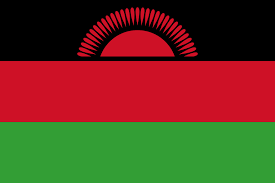Southern African Development Community
Malawi

Malawi
Malawi is a landlocked country located in southern central Africa along the western part of the Great Rift Valley of Africa. Covering a total area of 118,484 km², it stretches some 900 km north to south, and between 90 and 161 km east to west. Malawi is bordered by the United Republic of Tanzania to the north and northeast, Mozambique to the east, south and south west, and Zambia to the west. The country is divided into three regions: the Southern Region, which is undulating and densely populated; the Central Region, which consists of fertile plains and is well-populated; and the mountainous and sparsely populated Northern Region. Lake Malawi is the third largest lake in Africa, spanning a length of 568 km and a width of between 16 and 80 km. In the north, the Rift Valley Escarpment rises steeply from the Lake, reaching altitudes of 2,500m above sea level. This area includes the Nyika Plateau and the forested Viphya Plateau.
Malawi has a subtropical climate with the rainy season lasting from November to March. The highlands and plateaux in the north are temperate with temperatures averaging between 20 and 27 degrees Celsius, with cool nights all year. Winter temperatures can however drop as low as 4 degrees Celsius. In the lowland areas of the south, it is more tropical and very hot during the rainy season with temperatures rising as high as 39 °C. Mean annual rainfall varies between 635 mm and 3,050 mm.
Malawi has an estimated population of 14,389,000. The main ethnic groups are Chewa, Tumbuka, Yao and Ngoni. English is the official and business language in Malawi, with Chechewe being the national language, which is widely spoken throughout the country, along with Chitumbuka, the dominant language in the northern region. The capital of Malawi is Lilongwe, and other major population centres include Blantyre and Zomba. The country gained independence in 1964 and became a Republic within the British Commonwealth. In 1994, Malawi became a multiparty democracy, with the president being the Head of State.
Agriculture is the largest sector of the Malawian economy, contributing more than a third of Gross Domestic Product (GDP), and generating more than 90 % of total export earnings. Malawi has long been dependent on the agricultural sector, both as the leading foreign exchange earner and for subsistence farming in the rural areas. The major exports include tobacco, tea and sugar. The agricultural sector includes arable agriculture, forestry and fisheries.
The tourism industry is seen as a sector for economic growth and diversification, as well as for increasing foreign exchange earnings. The principal tourist attraction in the country is Lake Malawi, which is set among rolling hills covered in tropical vegetation. There are two resort areas: Mangochi at the southern end of the Lake, and the Salima area on the south western shore. The Lake has one of the highest diversities of freshwater fish in the world. Around Cape Maclear, there are excellent snorkelling and diving spots. Birdlife at Lake Malawi is also plentiful and birds such as African fish eagles, Palmnut vultures and Pel's fishing owls are prolific among the flood plains and reed swamps. There are five national parks in Malawi notable for their spectacular scenery,unspoilt beauty and rich diversity of wildlife. Of note are Nyika National Park, Kasungu National Park and Liwonde National Park. Malawi is also home to herds of elephant, hippos, waterbuck, reedbuck and sable antelope. The country has one of the largest numbers of orchid species in Africa and Zomba Mountain is one of the best places to see orchids and other native flora.
Titles | Information |
Head of State | His Excellency Dr Lazarus McCarthy Chakwera |
Head of Government (if applicable) | - |
Capital City | Lilongwe |
Independence Day | July 6, 1964 |
Official Languages | English, Chichewa |
Currency | Malawi Kwacha (MWK ) 1 MK= 100 tambala |
Area/Size of the country (km²) | 118,484 |
Natural resources | Tobacco, sugar, tea, cotton, groundnuts, coffee, fish and wildlife |
Government website link | |
Statistical indicators | Please refer to the latest SADC Statistics Yearbook |
Malawi SADC National Contact Point
Mr B H Sande SADC National Contact Point, Secretary for Foreign Affairs, Ministry of Foreign Affairs, P.O. Box 30315, LILONGWE, MALAWI Cell: +265 999 930060 Email: bhsande1@gmail.com Mrs Faith Kazembe Mwalubunju (Alternative) Alternate SADC National Contact Point, Tel Direct: +265 0 1788 952 Cell: +265 0 999 930 975 Email: faith.mwalubunju@foreignaffairs.gov.mw chimwemwekazembe@gmail.com Mr McDonald S. Mizati, Charge d'Affaires' Malawi High Commission in South Africa 770 Government, Avenue Arcadia PRETORIA, SOUTH AFRICA Cell- +27635458851 / +27824484285 Email: highcommalawi@telkoms.net stellandau.scn@gmail.com; panji.winston@gmail.com; |
Sign in to add your comment.